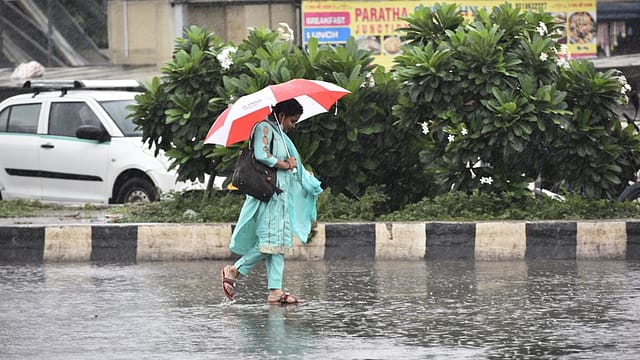Normal monsoons this year: Skymet
ADVERTISEMENT

Monsoon rains are likely to be normal this year, Skymet, India's leading private weather forecaster predicts. The forecast, if proven correct, can help ease the concerns of the country's farmers as over 50% of India's net sown area is rain dependent.
Skymet expects the upcoming monsoon to be to the tune of 102% (with an error margin of +/- 5%) of the long-period average (LPA) of 868.6mm for the four-month long period from June to September. In a forecast released on January 12, 2024, the agency, which also offers agriculture risk mitigation solutions, had made a similar assessment.
"El Nino is swiftly flipping over to La Nina. And, monsoon circulation inclines to be stronger during La Nina years. Also, transition from Super El Nino to strong La Nina has historically tended to produce a decent monsoon. However, monsoon season may start with the risk of impairment, attributable to the remnant effects of El Nino. The second half of the season will have an overwhelming edge over the primal phase," Jatin Singh, Managing Director, Skymet, says.
El Nino and La Nina are global ocean atmospheric phenomena that can affect monsoon rainfall. In addition to El Nino Southern oscillation (ENSO), the major factors governing the interannual variation of south west monsoon are Indian Ocean Dipole (IOD), North Atlantic Oscillation (NAO) and Pacific Decadal Oscillations (PDO).
Skymet states that a preliminary forecast of positive IOD this season will work in tandem with La Nina for better monsoon prospects. "Notwithstanding, the start of the season is expected to be aberrated on account of the quick transition from El Nino to La Nina. Also, the rainfall distribution is likely to be diverse and unequitable for the season, as a whole," the agency says.
December 2025
The annual Fortune 500 India list, the definitive compendium of corporate performance, is out. This year, the cumulative revenue of the Fortune 500 India companies has breached $2 trillion for the first time. Plus, find out which are the Best B-schools in India.
In terms of geographical prospects, Skymet expects sufficiently good rains in the South, West, and Northwest regions of the country. It states that the core monsoon rainfed zone of Maharashtra and Madhya Pradesh will receive adequate rainfall, though the eastern states of Bihar, Jharkhand, Odisha and West Bengal will be at risk of deficit rainfall during peak monsoon months of July and August. Northeast India is likely to observe less than normal rains during the first half of the season, it says.
